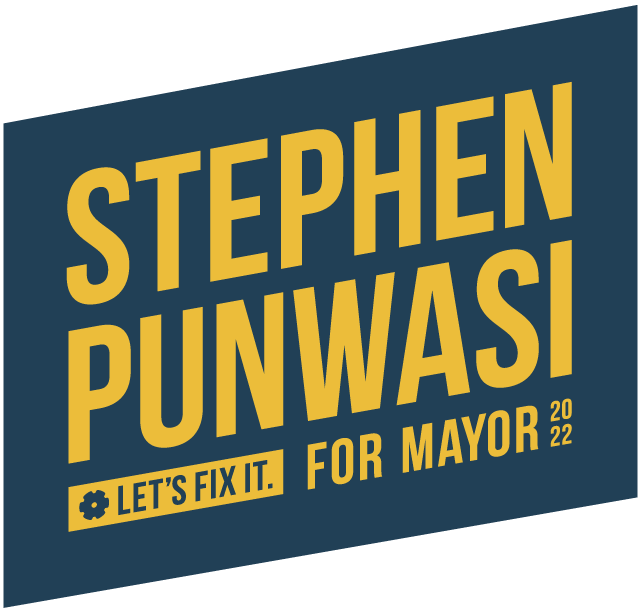Imagine a city known for how it’s reducing climate related issues, not adding to the crisis we’re facing. One that fosters and invests in cost-effective innovation, and shares with other cities helping to make the world cleaner & more friendly. A city that employs scientists to solve our problems, instead of taking meetings from lobbyists who want to make a profit from those same problems.
Toronto is home to some of the world’s most innovative and caring people, and we need to foster them. We have generational challenges and we need to work together to figure this out, and stop predatory exploitation. The way Toronto is trying to tackle the climate crisis is broken. Let’s fix it.
Plan Highlights
Climate Innovation Lab. Cities have unique climate problems and we need to accelerate how we’ll solve them. That’s why we’re going to start a climate innovation lab, to help create open and cost effective solutions to lessen the impact of climate change. The plastic eating mushrooms we’re using to turn our signs into organic matter within weeks are just one example. Oh, we didn’t tell you about that? Well…
Renewable and Solar Roads. It’s not just traffic that’s an issue for climate change, it’s the roads themselves. We’re going to pilot renewable solutions to replace the fossil-based solutions used to create our current roads, and reduce the heat island effect.
Light Rail and Electric Busses. We need more people on transit, while also using energy smart solutions. That’s why we’re going to build light rail using iterative roll outs to minimize delays and get them up and running much faster. We’ll also begin an immediate transition and retrofit of our bus fleet to electric.
The Solutions
Climate & Environment Innovation Lab
Let’s turn Toronto into a real world class city by leading climate & environment innovation. Cities have unique challenges, and we need to start investing in open patent solutions to solve our problems. If the city takes initiative we don’t have to wait for private industry to come up with the most profitable way to solve our issues. We can start solving them right now.
One example of this is something we’ve been working on — using plastic eating mushroom mycelium to break down plastics into organic matter within weeks. We procured the spores and have been using them to break down samples of our lawn signs.
Our lawn signs will serve as a small test sample, but we’d love to start doing larger tests at scale for the city. If successful, it’s a model we could scale and roll out to other cities.
Renewable and Solar Roads
Toronto’s roads are currently made of asphalt, a fossil fuel based solution. It’s effective and cheap, but if we’re going to reduce our dependence on fossil fuels we need to embrace bio-based, renewable solutions. That’s why we’re going to pilot renewable and solar roads and paths.
Within the first year, we would like to have pilot programs of bike lanes and walking paths made of materials like bioasphalt. These green solutions are cheaper, and use less heat and mixing (which uses more energy) compared to traditional asphalt. If successful, we can drastically reduce the heat island effect in Toronto, while saving money.
Toronto has thousands of kilometers of roads, and while we’re waiting for them to be replaced with a tool like bioasphalt — let’s put some to work. We plan to source solar roads, helping to generate more renewable energy.
We don’t have all the solutions for how cities will become more climate friendly, but we have to start somewhere. We call ourselves world class — let’s start living upto that title by demonstrating global leadership.
Light Rail & Electric Buses
The most effective way to reduce traffic is to make regions less centralized, so everyone doesn’t have to travel to one point. We address this in our transit plan, where we explain we’ll turn transit-owned land into economic hubs. Reducing the number of people that congest the downtown core will drastically reduce emissions from cars idling in traffic, but the problem of moving people more effectively still remains.
We’re going to build out Toronto’s light rail and electric bus routes, and make them a delight to use. Light rail will be run along major corridors, connecting a grid by 2030. A strategy to move the most people as quickly and comfortably as possible, is key to incentivising people to use public transit.
Don’t worry, this won’t be another Eglinton Crosstown or St. Clair-style fiasco for residents. We’ll minimize resident disruption by using an iterative strategy, rolling out the system a few miles at a time. This will minimize construction and get people on more effective transit as quickly as possible. Our transparent sourcing and plan to create diversified revenue by turning existing transit lands into City-owned commercial revenues, will ensure this won’t be a financial disaster either.
Light rail is preferable for heavy routes, since they have a long history of providing reliability. No electric bus has reliable data on its full lifecycle, and battery sourcing has its own environmental impact — we just don’t see the ecosystem disruption it causes. However, light rail isn’t practical for many routes, and for that we still need electric bus fleets.
To solve this, we plan to only procure electric buses going forward and retrofit existing fleets that have a long service life remaining.
As a team of environmentalists, each of our policies considers climate at its core. Our infrastructure plan reduces material waste, our plan for community driven economies creates more equitable distribution of opportunity outside the downtown core, and our anti-poverty plan introduces plant-based school breakfast and lunch, to offset factory farming which will reduce water and emissions.
We can have a great city and take strong climate action at the same time.

